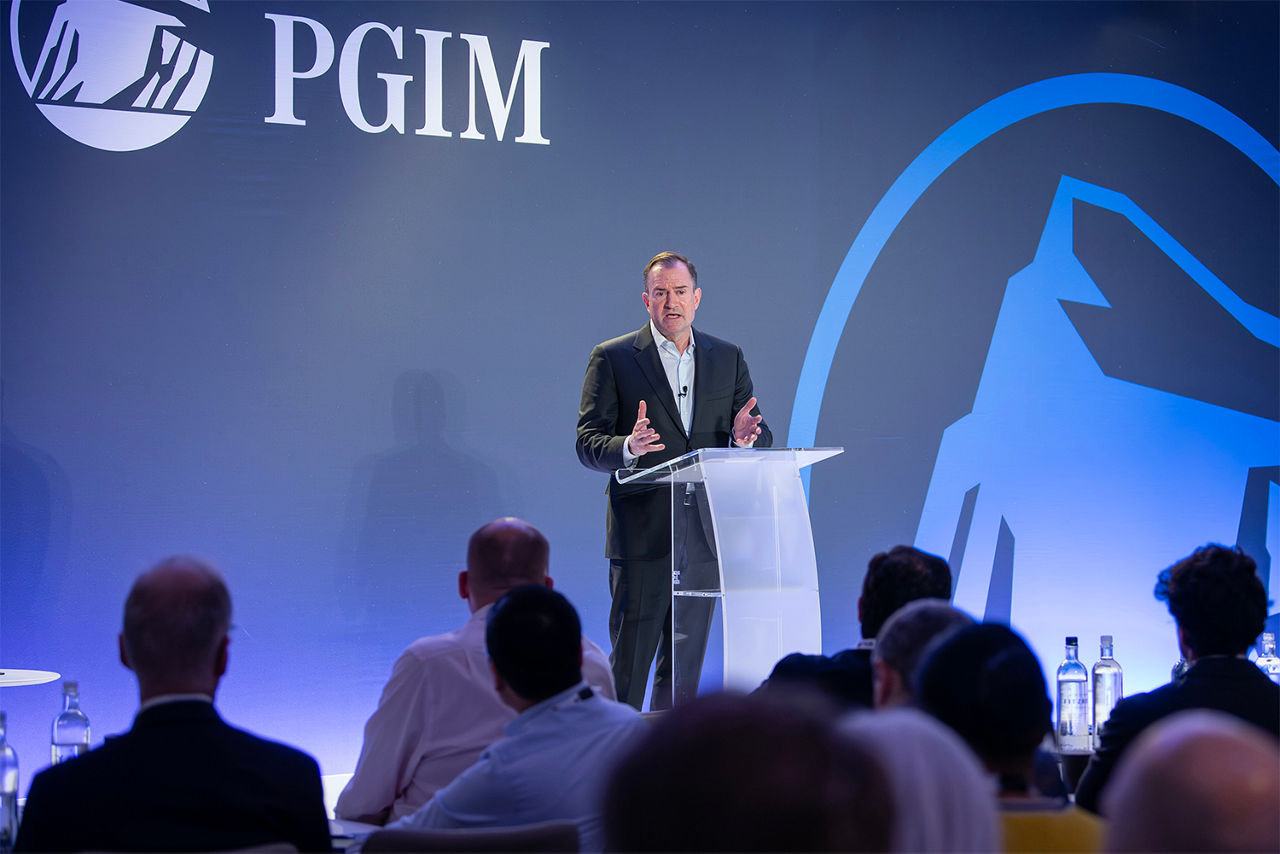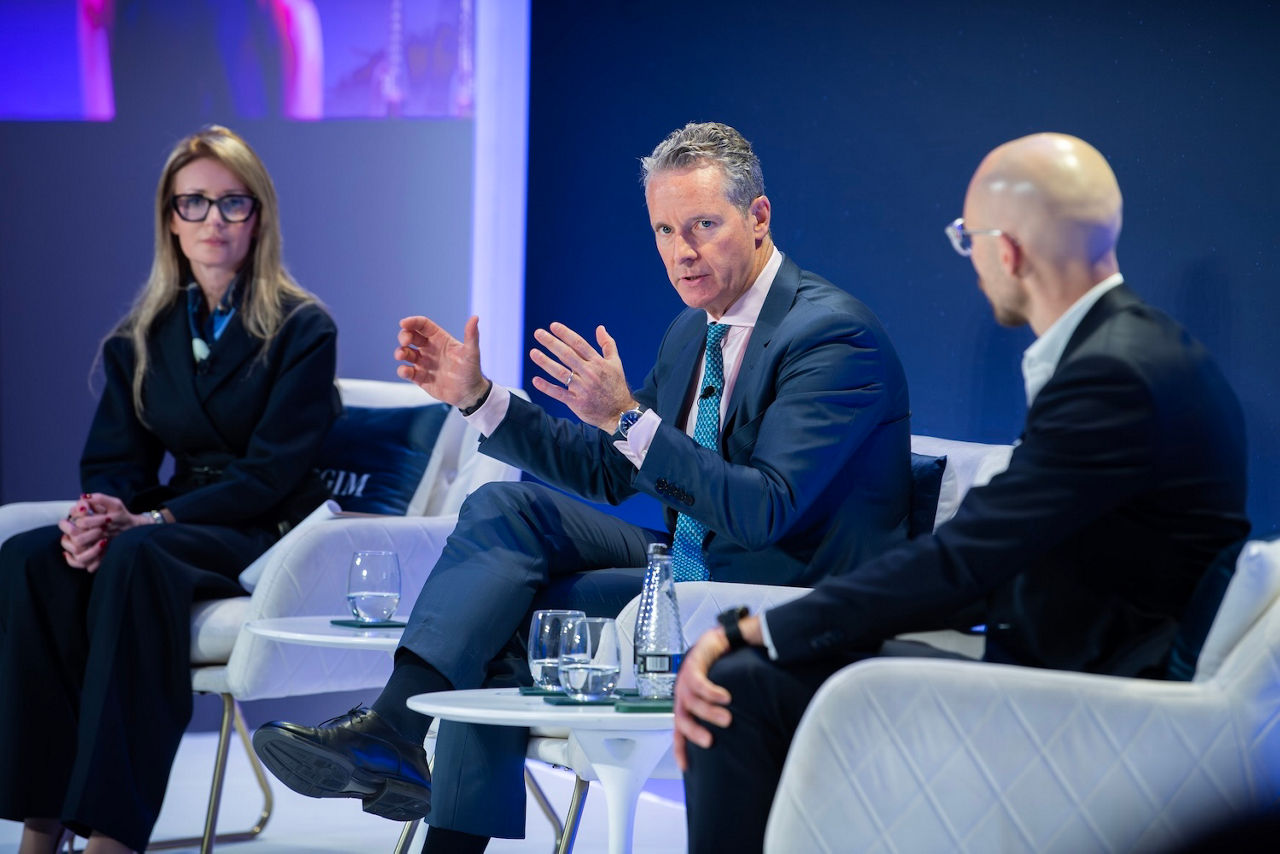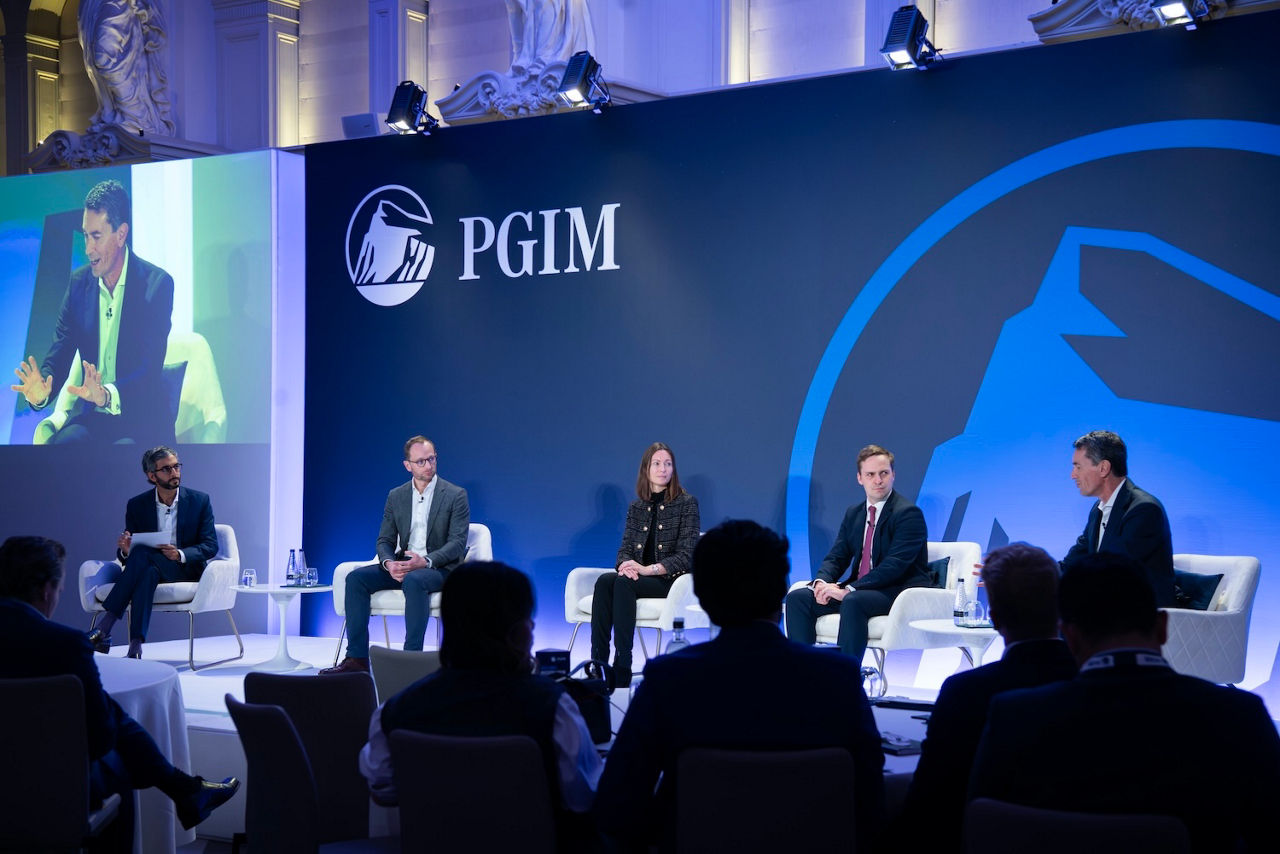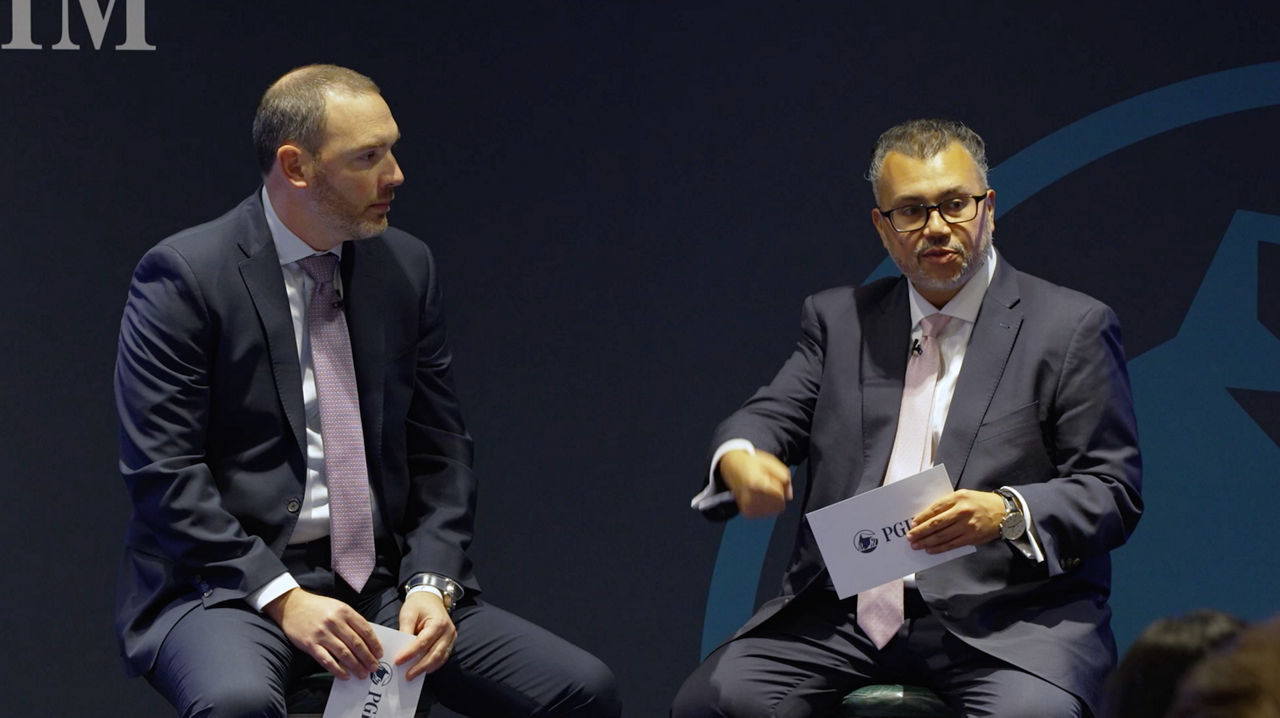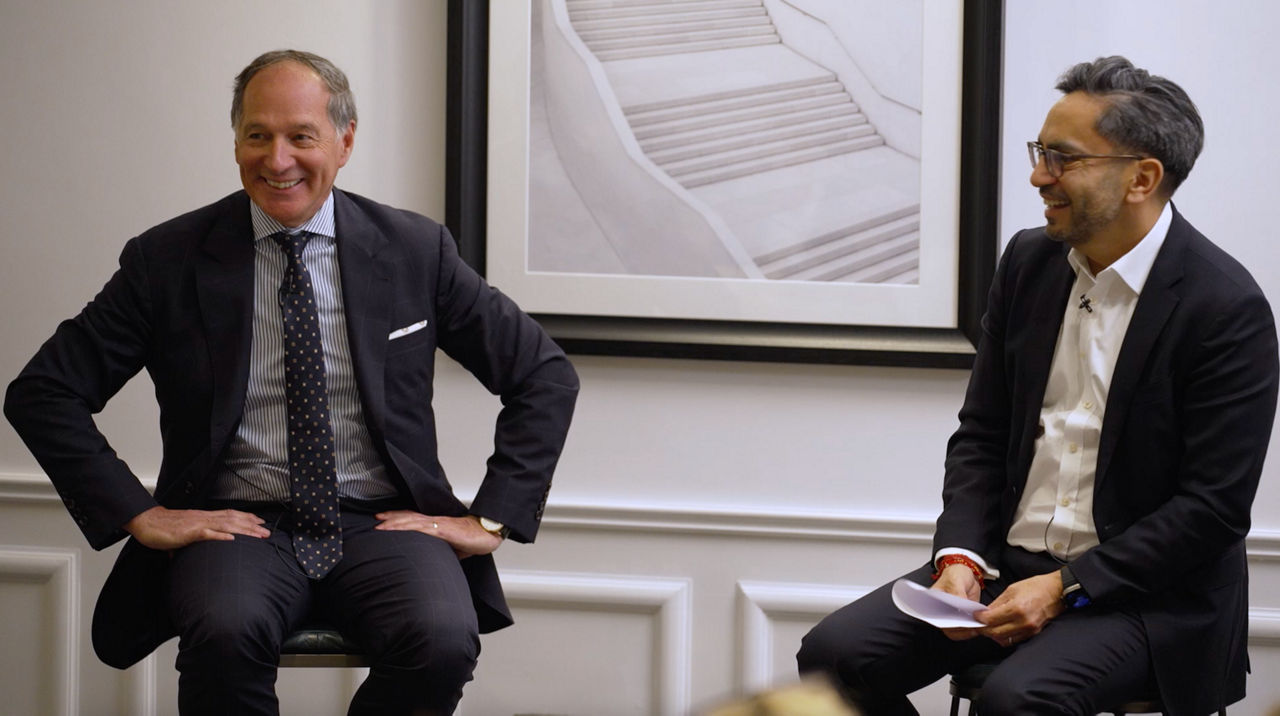Recalibrating Resilience was the dominant theme of our sixth annual EMEA Investor Forum in London on November 18, 2025. In a period of lasting structural change, investors are rethinking how portfolios can deliver resilience, flexibility, and long-term growth. Three key themes shaped the day:
- Geopolitics, regulation, and capital flows are increasingly intertwined and influencing sector outcomes in real time.
- A new approach to diversification in a fragmented world is prompting asset allocators to combine public and private exposures.
- Transitions in the real economy - from digital infrastructure to supply-chain transformation – are creating new investment avenues.
-
Remarks from our CEO We are living through a structural reset. Developed market governments are highly leveraged, central bank independence is being questioned, and regional conflicts are rising. Integrated capabilities are critical for securing opportunities and delivering superior outcomes. The need for holistic solutions remains paramount for our clients.
-
Strategic Fixed Income: Blending Private and Public in the Modern Portfolio Private credit is no longer a side allocation - it's a central pillar in how institutional portfolios are being built. This session explores how investors are combining public and private fixed income to design more resilient, flexible and outcome-driven strategies. From deepening manager partnerships to navigating liquidity challenges, our experts explore how fixed income markets are evolving to meet the demands of modern, multi-asset portfolios.
-
Powering the AI Era: Data Centers and the Future of Digital Infrastructure Data centers sit at the nexus of real estate and infrastructure investing and are critical to the digital economy. Opportunities abound, but savvy investors need to navigate power dynamics, land constraints, and ESG considerations. This session explores the evolving opportunity set, risk factors, and resulting strategies for portfolios. From financing models to location challenges, our panel unpacks why data centers are no longer just property assets but essential infrastructure - and how investors can position for long-term value.
-
Hard Choices, Long Horizons: Inside the CIO Perspective Geopolitics has become a structural force shaping capital costs, supply-chain resilience, and energy transition. Meanwhile, an uncertain macro regime is compelling CIOs to revisit assumptions on liquidity, duration, and diversification. This session brings diverse allocator perspectives on positioning portfolios for resilience in a world defined by geopolitical tension and uneven growth.
-
The Great Balancing Act: Growth, Policy, and Market Reality With interest rates stabilising but uncertainty still on the horizon, investors are rethinking where we are in the cycle - and what that means for credit, growth, and real assets. In this session, we unpack the global macro landscape; from diverging central bank paths and persistent inflation dynamics to inflection points in global real estate markets. This discussion explores how institutional investors can navigate a shifting market environment.
-
Structured for What's Next: Inside the Reshaped Fixed Income Landscape Structured fixed income is stepping into the spotlight as the demand for income and resilience rises. From ABF to CLOs, investors are tapping into a broader set of securitised strategies that offer spread, structure, and downside protection. This session explores the opportunities in today's market, the distinct role structured fixed income can play in a broader playbook, and why innovation in origination and structuring is reshaping how institutional capital is deployed.
-
Fault Lines and Flash Points: Geopolitics in an Age of Realignment Geopolitics is about how nations project power beyond borders. Since the end of the global financial crisis, we’ve entered a geopolitical super cycle. We are moving towards a world defined by resilience and national interests. Shorter, less complex supply chains and reduced dependencies on the U.S. or China are reshaping corporate strategies and impacting productivity and valuations. Tariffs and sanctions are now tools of economic warfare, aimed at undermining competitors rather than fostering growth. The challenges and opportunities lie in anticipating ripple effects.
-
The Conviction Playbook: Structural Winners in Turbulent Times As the world changes rapidly, the search for long-term growth requires laser-like focus. This session examines how to identify companies with innovation-led business models that can create genuine value for customers and investors alike. Our experts explore how to navigate a landscape where leadership is constantly evolving. They also explain why a short term focus on valuation can be misleading and why selling often trumps buy-and-hold-forever approaches.
-
Curious by Nature: A Conversation with Louis Theroux Louis Theroux, British-American documentary filmmaker, journalist, and broadcaster is known for his gentle and unassuming interviewing style. In this session, he shares his journey and insights from a three decade career of interviewing celebrities and criminals alike.
Up Next
Quick Take: 3 key insights from the Forum
At the 2025 EMEA Investment Forum in London, PGIM hosted an afternoon of discussion, debate, and peer-to-peer networking to help investors explore the market outlook, assess the geopolitical forces reshaping the global economy, and identify opportunities across public and private markets. Below are our key insights from the day:
- 1. Turbulent Macro
- 2. Uncovering Opportunities
- 3. Resilient Portfolios
"We are in a geopolitical super cycle."
– Tina Fordham, Co-Founder, Fordham Global Insight
Since the end of the global financial crisis, we’ve entered a geopolitical super cycle: risk events have tripled, trade disputes surged tenfold, and authoritarian regimes now outnumber democracies for the first time since 2002. This marks a paradigm shift from the frictionless, efficiency-driven world of 1989–2008 - the most peaceful and prosperous era in history - toward one defined by rising national interests.
The resilience in major economies can be traced to a long period of stable employment. But that is changing at the margins, with job vacancies declining. Overlaid with the widening Artificial Intelligence (AI) shock sweeping across the labour markets, this could be a tipping point for the world economy. The combination of this structural transition and cyclical weakness could prompt a broader economic downturn. Indeed, the labour market is the single most important indicator for policymakers.
We are in a paradigm shift. Developed-market governments are highly leveraged, central bank independence is being questioned and regional conflicts are rising. We are not going back to normal, we are heading somewhere else. Waiting for market signals from geopolitical developments is dangerous; by then, it’s too late to hedge against it. Many data points are already emerging, so it is essential to follow the trend line.
"There is a lot of value to being a meaningful partner across the capital structure for our clients."
– Edwin Wilches, Co-Head of Securitized Products, PGIM
The demand for private capital has surged, driven by structural shifts and thematic trends such as AI expansion and increased defence spending. Regulators in Europe are recognising that securitisation finances the real economy. This environment is fostering convergence between public and private markets, enabling managers to deliver integrated solutions across the capital structure - from AAA securities to whole loans.
Emerging markets are seeing rapid growth in tech and internet platforms, driven by unmet demand for convenience and access. These firms combine e-commerce with fintech, disrupting traditional banking systems and expanding financial inclusion. This innovation wave mirrors past shifts like mobile internet and cloud computing. Now, generative AI marks the fourth computing era - poised to be the most transformative yet. For example, capital spending on AI infrastructure is unprecedented, with companies like Nvidia scaling from $15 billion in data center revenues in 2022 to projections exceeding $300 billion next year. Data centers are mission-critical for storage, transport, and low-latency applications, requiring massive infrastructure and financing. Private credit now plays a key role, offering large checks, rapid execution, and long-term commitments.
"As portfolios grow, complexity rises, prompting asset allocators to bring private and public markets together to drive greater efficiencies."
- John McNichols, Head of Private Credit Investment Product & Strategy, PGIM
Resilience has become the central motif for portfolio construction. At a thematic level, the defined-benefit to defined-contribution transition underway in many countries is prompting asset allocators to rethink their strategic asset allocation (SAA) priorities. While flexibility is key, it is equally important to ensure drawdowns remain manageable and the risk of capital loss is minimised. As a panellist said, “The ultimate risk for any asset owner is the loss of capital and not mark-to-market risk.”
Strategies aimed at reducing vulnerabilities to geopolitical shocks and macro headwinds are gaining momentum. Tactical shifts include reducing concentrated U.S. equity market risks, deviating from market capitalisation-weighted indices, and fully hedging U.S. dollar exposure in global portfolios. Plan sponsors are also incorporating floating-rate debt and trimming long-duration government bonds, bolstering stability in the face of inflation and interest-rate volatility. The rise of benchmarks in quantitative and hedge fund strategies offer asset allocators alternatives to passive approaches oriented towards public equity markets. In fixed income, the blurring of lines between public and private markets is helping build all-weather portfolios.
At a broader level, private markets offer distinct origination advantages while public markets help drive value-added portfolio construction benefits. Driven by the rising adoption of the total portfolio approach and enhanced valuation techniques, private and public markets are converging at speed - evident in the surge of recent transactions that blur traditional boundaries.
you may also like
-
Navigating the New Global Economic Order: Three Insights from BerlinDaleep Singh shares three insights from the Berlin Global Dialogue on how fiscal dominance, industrial strategy, and global cooperation are reshaping the economic landscape.
Read More
-
The European Tilt: A 2025 RenaissanceExplore how Europe’s evolving markets may influence investment strategies and regional opportunities.
Read More
-
France’s Reform Paralysis Adds to Market UncertaintyExplore how Europe’s evolving markets may influence investment strategies and regional opportunities.
Read More

